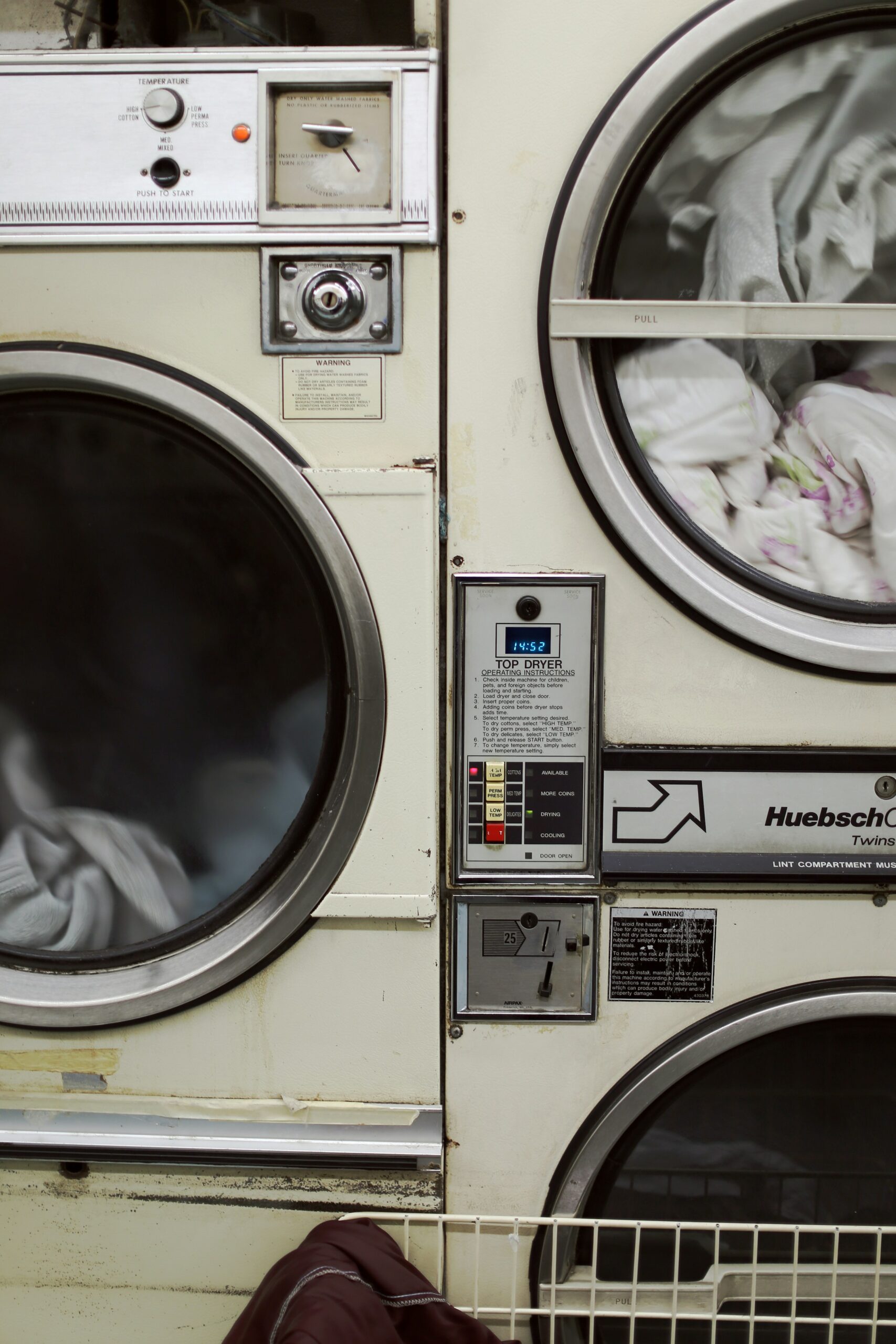Laundromat Machine maintenance isn’t just about keeping washers and dryers running—it protects your investment, ensures customer satisfaction, and preserves long-term profitability. Regular maintenance maximizes efficiency, reduces utility waste, and prevents costly downtime. Neglected equipment can lead to leaks, uneven loads, and even safety hazards. A disciplined maintenance strategy not only protects ROI but also extends the useful life of your machines by years. Smart owners treat maintenance as a profit-protection plan—not just a repair checklist.
Why Machine Maintenance Is Critical for Profitability
Maintaining equipment is more than a repair checklist—it’s a profit-protection strategy. Broken machines lead to lost revenue, unhappy customers, and higher operational costs. Well-maintained machines run efficiently, save energy and water, and deliver a better customer experience.
Key benefits:
- Minimize emergency repair costs
- Reduce downtime and lost revenue
- Preserve energy and water efficiency
- Maintain customer satisfaction and repeat business
Key Areas of Routine Maintenance
Daily, weekly, and monthly checks help prevent emergencies and preserve machine performance. Establishing a standard maintenance routine ensures nothing falls through the cracks and keeps your operation predictable. These tasks should be part of staff training and logged to verify compliance and identify trends. Skipping even a few small checks can result in machine failure or fire risk. Below are the key focus areas for any laundromat maintenance plan:
- Lint Trap Cleaning
Remove lint from dryers at least once daily to prevent fires and ensure airflow. A clogged lint trap reduces drying efficiency and creates a safety hazard. - Washer Drum and Door Gasket Inspection
Clean and inspect the drum and gasket to prevent mold, mildew, and odor buildup. Pay special attention to front-load washers, where residue often accumulates. - Hose and Connection Checks
Look for cracks, leaks, or wear in hoses and connections behind each unit. Replacing a hose early costs a fraction of a flooded store. - Drain and Filter Maintenance
Clear obstructions from washer drains and pump filters regularly. This prevents backups and improves water flow. - Control Panel and Button Functionality
Make sure all controls are responsive and displays are working. Malfunctioning controls confuse users and lead to negative reviews. - Coin Drop and Payment Reader Cleaning
Clean coin drops and card readers to ensure accurate payment processing. Dust or moisture buildup can cause payment failure.
Preventive Maintenance vs. Reactive Repairs
Waiting for machines to break before servicing them is costly, inefficient, and damaging to your reputation. Preventive maintenance involves addressing small issues before they become big ones—tightening a bolt before it rattles loose, replacing a belt before it snaps, or cleaning sensors before they fail. This approach reduces emergency repair calls, extends equipment lifespan, and prevents chain-reaction failures that take multiple machines offline. While repairs are inevitable, proactive care dramatically lowers the frequency and severity of issues.
Preventive maintenance also allows you to schedule work during off-peak hours instead of reacting to surprise breakdowns during your busiest times. It’s about gaining control over your operation rather than scrambling to fix what’s broken. A machine that runs consistently for 10 years is far more valuable than one that breaks down every other month.
Training Staff for Maintenance Tasks
Your employees or attendants are the front line of machine care, and giving them the right training can prevent costly issues. Clear documentation and repeatable routines are essential—don’t assume people know how to check a filter or inspect a vent. Provide visual checklists at each machine zone and conduct hands-on walk-throughs to explain what to look for.
If your laundromat is unattended, consider using smart alerts or camera feeds to monitor for issues like flooded floors or stuck doors. When staff are empowered to spot and report early warning signs, the burden on service technicians drops significantly. Preventive care becomes a team effort, not just the job of one maintenance contractor. Set expectations, reward consistency, and review maintenance logs weekly to build accountability.
Working with Professional Service Providers
Some maintenance tasks require expert care. Partnering with a licensed laundry technician ensures issues like electronic malfunctions or drum alignment are fixed safely. Establishing a service contract with quarterly inspections and diagnostics is often more cost-effective than emergency repairs. Professionals also provide insights on machine health and recommend upgrades when the ROI makes sense.
- Schedule quarterly professional inspections
These deeper evaluations can catch hidden issues staff might miss. They also provide documentation for warranty compliance. - Track service call data and trends
Analyze which machines need repairs most often. This helps you plan replacements and negotiate better terms with equipment suppliers. - Request maintenance logs after each visit
Keep detailed records for insurance, taxes, and asset planning. Logs help you prove responsible ownership in case of a claim.
Using Technology to Streamline Maintenance
Smart laundry systems make it easier to manage maintenance by using commercial washers and dryers with built-in diagnostics that send alerts for errors or service needs. Mobile apps and cloud platforms provide real-time insight, allow scheduling based on usage, and even enable remote resets. By integrating maintenance logs into or management software, operators can streamline reporting and turn maintenance into a proactive, data-driven process.
Want to see how smart laundry systems and integrated software can streamline your operations? Schedule a demo today to explore The Laundry Boss in action.
The ROI of a Strong Maintenance Program
A well-maintained laundromat has higher uptime, happier customers, and fewer expensive surprises. Machines last longer, perform better, and retain their value longer on your books. Customer trust improves when machines work as expected and stores feel clean and cared for. Instead of draining revenue on reactive fixes and lost sales, you build a stable, profitable operation with predictable costs. Leveraging POS systems in laundromats can further support this stability by integrating financial tracking with maintenance data. Maintenance is a revenue-preservation tool that pays for itself over and over.
Summary
Effective laundromat machine maintenance is essential for protecting revenue, reducing downtime, and extending the life of your commercial washers and dryers. By combining daily routines, preventive service, and smart laundry systems, operators can avoid costly breakdowns and deliver a reliable customer experience. For laundromat owners in Kalamazoo, La Mesa, and surrounding areas, a strong maintenance program not only preserves energy and water efficiency but also ensures customer satisfaction and long-term profitability.








